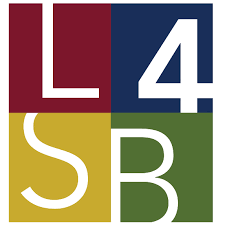
Protecting Brands and Trademarks in the United States
The United States leads the world in Gross Domestic Product (or GDP), representing $26.95 trillion dollars (or 25.83% of the world’s GDP), at the end of 2023. This equates to significant opportunities for international companies and businesses. To maximize the effectiveness of business activity in the United States, it’s important to distinguish your products and services in the marketplace, and this happens through the creation, investment and protection of a unique brand.
The US has a robust system to protect intellectual property, including copyrights, patents, trademarks and trade secrets. Trademarks represent a unique word, image or other mark used in association with a product or service, to identify the product or service, in commerce. In other words, Trademarks can be used to protect your brand in the United States.
Trademarks are big business in the US. At the start of Q4 2023, there were over 3 million registrations in the Trademark database, with over 737,000 applications year-to-date and over 414,000 registrations year-to-date. The percentage of applications refused upon first action is high: It’s over 60% using TEAS Plus, and well over 95% for filings under the Madrid Protocol (discussed below). It takes the United States Patent and Trademark Office (or USPTO, the regulatory agency for US-based trademarks), approximately 8.5 months to first examine a new trademark application. For example, as of January 9th, 2024, the USPTO is currently examining trademark applications submitted between March 27th, 2023 and April 10th, 2023. Sources: https://www.uspto.gov/dashboard/trademarks/ and https://www.uspto.gov/trademarks/apply.
Because there is so much commerce and competition in the US, and because of the time required for trademark application review and associated high refusal rate, it’s important to understand how the system works and the steps for a successful application filing. This is especially true for foreign companies located outside the United States, trying to protect their brand inside the United States.
The United States Legal System in Brief
The US consists of 50 States, approximately 574 federally recognized Indian Tribes, approximately 16 Territories, and even a number of contested territories (collectively, “jurisdictions”).
In the United States, the States, Indian Tribes and Territories make and enforce their own laws within their own geographic boundaries, although those laws are subordinate to “federal law”, which in turn is subordinate to the US Constitution. Federal law are statutes passed by both houses of Congress (the US House of Representatives and the Senate), and either signed into law by the US President at the time, or voted on by a supermajority (two-thirds vote) in Congress to overcome a presidential veto. Federal law can also be represented by regulations passed by various federal departments, such as regulations governing aviation (the Federal Aviation Administration, or FAA) or patents and trademarks (the USPTO).
There are approximately 438 agencies and subagencies in the US.
United States Trademark Law in Brief
There are multiple levels of trademark law in the United States. First, almost all jurisdictions in the US (except at the federal level) have what’s called “common law rights” in the use of a name. Common law rights require no registration, and in general they permit a “prior user” to prevent a “new user” from continuing to use a name in their respective jurisdictions. Anyone is presumed to have a “right” in their company name, within the borders of that jurisdiction, to prevent “confusion in the marketplace” with respect to the source of the product or service in question. Because common law rights relate to what’s taking place in a particular jurisdiction, one person in one state cannot use “common law rights” to prohibit someone from using the same name in another jurisdiction. But, common law rights are an available “fall back” option, when a US-based business hasn’t previously taken the steps to trademark or otherwise protect their brand name in a particular jurisdiction.
Second, almost all jurisdictions in the US have some form of “trademark registration”, including at the federal level. Non-federal trademarks provide protection within a jurisdiction’s borders, and cannot be enforced outside such borders. The primary difference between a non-federal trademark versus “common law rights”, is (1) broader protections, i.e. marks that are similar – not just the same – can be protected, and (2) additional legal options are available, including damages, special damages, attorneys’ fees and more. Non-federal trademarks are not favoured over federal trademarks, however, because (a) non-federal trademarks cannot be enforced outside the relevant jurisdiction where the non-federal trademark was registered, and (b) federal trademarks take precedence over non-federal trademarks, and therefore federal trademarks can be used to stop trademark infringement anywhere in the US, including jurisdictions that have otherwise awarded trademark rights in a mark in question.
Finally, third, trademarks at the federal level are issued and managed by the United States Patent and Trademark Office, or USPTO. These trademarks, as mentioned above, take precedence and priority over all other use within the United States. Such trademarks protect against infringing use by a legal standard called a “likelihood of confusion.”
The Likelihood of Confusion Standard in the United States
There is a seminal court case in the United States, that defines the standard for “likelihood of confusion” to consider whether a trademark is being infringed. It is the same legal standard (or test) the USPTO uses, in determining whether it will accept or reject a trademark application, based on other pre-existing trademarks.
The likelihood of confusion test bars registration of an applied-for mark that is so similar to a registered mark that it is likely consumers would be confused, mistaken, or deceived as to the commercial source of the goods of the parties. Likelihood of confusion is determined on a case-by-case basis by applying the factors set forth in In re E. I. du Pont de Nemours & Co., 476 F.2d 1357, 1361, 177 USPQ 563, 567 (C.C.P.A. 1973) (called the “du Pont factors”). There are thirteen factors defined, but the first two are what seems to create the most problems for most parties. Those are:
- The similarity or dissimilarity of the marks in their entireties as to appearance, sound, connotation, and commercial impression.
- The similarity or dissimilarity and nature of the goods . . . described in an application or registration or in connection with which a prior mark is in use.
This means the USPTO will not permit a trademark to be registered in the United States that is “similar” to a pre-existing trademark. Similar in connotation can include translations, abbreviations, common misspellings, and synonyms, among other possibilities, and can be the source of great frustration.
For example, the words read, red, reed, review, peruse, study, rojo (Spanish), au rouge (French), na czerwony (Polish), leer (Spanish), lire (French), and czytać (Polish) could all be considered “similar” for trademark purposes, depending on the use.
Descriptive versus Distinctive
Another issue standing in the way of trademark registration in the United States is “descriptiveness.” Descriptive terms are not protectable, unless they acquire secondary meaning in the marketplace, which generally means significant expense in market penetration, advertising and public surveys are needed to prove “secondary meaning.”
Descriptiveness refers to words or terms used in the context of the products or services they refer to. For example, a trademark incorporating the word “Apple” would be considered “descriptive” when used for an apple farm or apple sauce or apple pie. The word “Apple” used in conjunction with a computer company, however, would be considered distinctive. When you have a trademark incorporating one or more descriptive terms, pretend they aren’t in the trademark to determine what distinctive terms remain. Considering the same example, “Apple Computer Company” can certainly be trademarked but the only distinctive term in that phrase is “Apple” – pretend the words “Computer Company” are not present in the phrase when analyzing descriptiveness, and “Apple” is the only word available when considering a “likelihood of confusion,” discussed above.
Distinctiveness, then, are those words or phrases in a trademark that are not descriptive of the product or service the trademark is associated with. Distinctive words are those that are suggestive or arbitrary. Again, for example, “Apple” has nothing to do with computers, or music for that matter. What other famous brands can you think of, that are comprised of words that do not define the product or service they are associated with?
The Madrid Protocol
When someone in the EU attempts to register a trademark in the US, the concepts of “likelihood of confusion” and “descriptiveness” may not always be a factor due to language and legal differences. This is perhaps why there is an over 95% rejection rate of trademark applications filed to the USPTO through the Madrid Protocol (as identified above).
The World Intellectual Property Organization (WIPO) governs the Madrid Protocol, which is a treaty amongst 130 nations, providing a centralized system for filing trademark in any of the 130 member countries, including the US and EU member states. Parties can file and manage their trademark in the participating Madrid Protocol countries, by utilizing a single streamlined application process.
To utilize the Madrid Protocol, a party is permitted to file an “International Application,” provided the party has already filed a trademark application in their country of choice, referred to as the “office of origin”. This application serves as the basis for their international application. Parties file the international application in their office of origin and pay the associated fees, as well as choosing countries they seek to obtain protection in. This permits, for example, EU residents to file a Trademark Application in the EU, and then file an international application that includes the United States.
After the international application is certified by the office of origin, it is sent to the International Bureau (or IB). The IB will review the application to make sure all required information is provided. If there are any issues, the IB will issue a notice of irregularity. Any notice must be responded to before the application can proceed.
If all problems have been resolved, an international trademark will be issued and published in the WIPO Gazette of International Marks. Individual Madrid Protocol members that you have selected examine the international application. Many of the countries require that a party is represented by a local attorney licensed in that country, and both the EU and US are no different. Each country uses their own trademark laws when reviewing the applications and can issue their own refusals (called “office actions”). These requirements vary country by country, which means you need to consider and avoid US laws around “likelihood of confusion” and “descriptiveness” in order for an EU-based trademark to prevail in the US.
In Summary
If you are in the EU, and wish to protect your brand in the US, we recommend you consult with local counsel in your home country to assist with filing properly in the EU. Before you finalize your application in the EU, however, it pays to consult with a US-based attorney to ascertain the risk associated with a refusal in the US. US-based attorneys can run what’s called a “Knockout Search” against the USPTO database, and give you a risk opinion to help you chose your brand wisely and hopefully maximize the potential for approval in both the EU and the US.
Once you’ve minimized the risk of a rejection in the US and the EU, then you should move forward with applying for your trademark in the EU. Your filing date can be used, under the Madrid Protocol, for establishing legal priority in the US, assuming your trademark application is approved in the US. To do that, once your trademark is registered in the EU, you can then create an “International Application” under the Madrid Protocol, and have it submitted to the USPTO in the US.
This article was submitted to TGC Corporate Lawyers by L4SB out of the United States.
L4SB is fellow member of TGC Corporate in Lawpact.
Visit L4SB website at: https://www.l4sb.com/

Intellectual property protection – see how we can help!
See also
TGC Corporate Lawyers
ul. Hrubieszowska 2
01-209 Warszawa
Polska
+48 22 295 33 00
contact@tgc.eu
NIP: 525-22-71-480, KRS: 0000167447,
REGON: 01551820200000. Sąd Rejonowy dla
m.st. Warszawy, XII Wydział Gospodarczy



